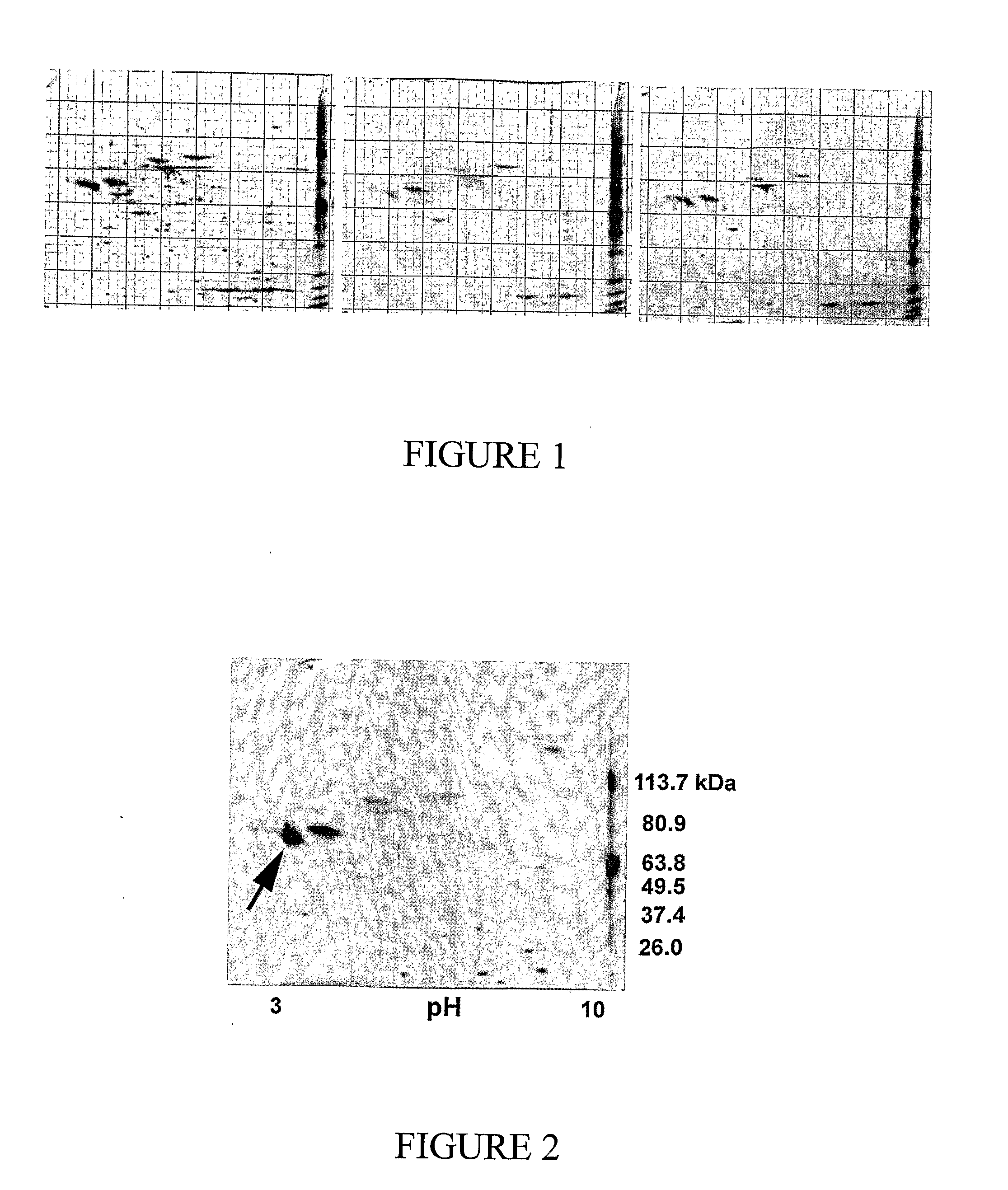Method of treatment
a skin tissue and treatment method technology, applied in the field of tissue remodeling, can solve the problems of chronic loss of joint movement, impair remodeling, and impair the deposition of extracellular matrix, and achieve the effects of promoting wound healing, enhancing healing of dermal injuries, and promoting wound closure and healing
- Summary
- Abstract
- Description
- Claims
- Application Information
AI Technical Summary
Benefits of technology
Problems solved by technology
Method used
Image
Examples
example 1
A Novel Model of Fetal and Lamb Response to Deep Dermal Injury Indicates that the Fetus Heals a Deep Burn Injury in a Scarless Fashion
[0157]It was hypothesized that a mid gestational fetus would heal a deep dermal burn injury in a scarless fashion, and a one-month old lamb would heal a similar injury with scarring. To test the hypotheses, models were developed of deep dermal partial thickness injury in the 80-day gestation (term=150 days) Merino fetus and the 1-month old Merino lamb. Subsequently, a study of the different healing modalities of these wounds was undertaken. Fetal and post-natal wounds were compared in three ways: macroscopically at post-mortem, with a novel histopathological scoring system and with immunohistochemistry. The expression of TGFβ1 and α-SMA proteins was examined. These proteins are markers of the myofibroblast, a cell strongly implicated in scar tissue formation.
[0158]A standardized model of deep dermal burn, as judged by light microscopy, was created on ...
example 2
Ovine Fetal Model for Protein and Nucleic Acid Analysis
[0189]Merino ewes were super-ovulated with 500 IU Folligon (Intervet International) and time mated. At 80 days fetal gestation, the ewes were anesthetized using thiopentone (10-115 mg / kg) and intubated with a size 10 Portex endotracheal tube. Anesthesia was maintained with halothane in 100% oxygen and continuous pulse oximetry monitoring was used throughout the procedure.
[0190]The ewe was placed in the supine position, the anterior abdomen was prepared by shaving and the area was swabbed with Betadine™. Following the creation of a paramedian skin incision, avoiding the superficial central abdominal vein, the uterus was delivered onto the operating field. A hysterotomy wound was fashioned, and the head and upper trunk of the fetus was delivered to the sterile field to conserve maximal quantities of amniotic fluid. Polypropylene tubes of 15 mls volume, with a 1.5 cm diameter were filled with sterile water and were heated in a hot ...
example 3
Lamb Model for Protein and Nucleic Acid Analysis
[0192]Merino lambs, (28-30 days old) were anesthetized with thiopentone (15 mg / kg) and intubated with a size 6.0 Portex endotracheal tube. Anesthesia was continued with halothane / 100% oxygen mixture, and continuous pulse oximetry monitoring was used throughout the procedure. The lamb was shaved on a standard area of the lower abdomen, initially with sheep clippers then with a razor, lukewarm water and shaving cream, until the skin was free of wool. The wound was then gently washed with lukewarm water to remove any soap residue. Hot water for scalding was prepared as previously described, and applied in the same manner.
[0193]For the lamb skin. it was determined that water should be applied at 82° C. for 10 seconds to create a deep dermal partial thickness burn. This was also determined by histopathological analysis. A higher temperature and longer duration of heat is required to create the same injury in lamb skin compared to fetal skin...
PUM
| Property | Measurement | Unit |
|---|---|---|
| Fraction | aaaaa | aaaaa |
| Mechanical properties | aaaaa | aaaaa |
Abstract
Description
Claims
Application Information
 Login to View More
Login to View More - R&D
- Intellectual Property
- Life Sciences
- Materials
- Tech Scout
- Unparalleled Data Quality
- Higher Quality Content
- 60% Fewer Hallucinations
Browse by: Latest US Patents, China's latest patents, Technical Efficacy Thesaurus, Application Domain, Technology Topic, Popular Technical Reports.
© 2025 PatSnap. All rights reserved.Legal|Privacy policy|Modern Slavery Act Transparency Statement|Sitemap|About US| Contact US: help@patsnap.com



